Monday 19 September 2011
Saturday 17 September 2011
Mirza Ghalib and Allama Iqbal:
On the Urdu sky, there are two moons; Ghalib and Iqbal. If Ghalib represents prodigious vogue, then Iqbal is all about passionism, splendid and imperishable excellence of sincerity and strength.
Ghalib was without any doubt passionate and dauntless soldier of a forlorn ray of elusive hope, who, ignorant of the future and unconsoled by its promises and wishes, nevertheless waged against the stereotypical of the old impossible and shackled world so fiery battle; waged it till he perished, – waged it with such splendid and imperishable rigor of strength. Whereas Iqbal lived in a different world with the same vigor and with the same zeal and zest.
Iqbal has an insight into lasting origins of joy and consolation for mankind which Ghablib has not; his poetry and the underlying ideas gives us more which we may rest upon than Ghalib’s, – more which we can rest upon now, and which men may rest upon always. The eternal ideas of Iqbal, which ignited the passion than, are illuminating our worlds even now, and they are here to stay, even surpass us, guiding our posterity.
Ghalib was Zauq’s inverse in almost every respect. He disapproved of Zaug’s trite statements and run-of-the-mill notions, clothed in idiomatic and smooth verses. Himself, like Browning he was rough and rugged, obscure and elliptical, full of far-fetched conceits and imagery. He was rebel in and out, and he revel in the revolts and loved to swim against the tide.He revolted against the contemporary style and very often coined his own original, through at times rather unhappy, metaphors from all kinds of
origins, which made him, obscure and incomprehnsible for his people.
They very first couplet of his Diwan is a formidable obstruction to his readers and had found as many interpretations as there are annotators, thought he himself explained it in a letter.
Against whose bold brush are all these pictures complainants? Disgustedly dressed in flimsy, paper raiment’s.
The reader is dumbstricken at the very start, but Ghalib on coining obscurer and obscurer images to suit his purpose. In his very first poem, to spend the night of separation is like (Farhad’s) digging the canal of milk out of a mountain. The curve of the sword-blade indicates the lover\s eagerness to be killed. His poetry is as elusive as the mythical bird, ‘anqa, and cannot be caught in the net of understanding, however wide. In his captivity (of love?), he is in extreme torture and his chains have burnt down to become ringlets’. If the start was so forbidding, what wonder that, to begin with, readers ridiculed him. The same fate met Browning, who ground his teeth then he found Tennyson’s works going through edition after edition, whereas his own would not fetch even their const price. Ghalib, further, believed in the brevity of style, even ellipses, like Browning, and omitted connectives and sometimes whole clause.
You and the dressing of you curls! I and my far-flung thoughts!
Numerous Commentators have applied their wits to fathom his thoughts, and have gone wool-gathering. Painters have grown lyrical over it in their pictures. Here is another couplet out of a hundred.
People may be unhappy with rivals, but Zuleikha is happy With the women of Egypt who got infatuated with Joseph.
Economy is characteristic of all poetic style. Ghalib knew it and felt proud of it.
Prolixity is enamoured of my ambiguity; My economy pours out like amplification.
Iqbal, like Tennyson, in comparison, was sharp and clear-cut. His metaphors were mostly conventional and familiar, though used in ever and ever fresh context, and his thoughts, well argued out. There was no vagueness or ambiguity about them. He repeated them again and again and as soon as the work khudi or ‘ishq or faqar was mentioned, the reader knew what to expect. He had read it a dozen times before. Iqbal had to make an appeal as a precept and could no afford to leave his readers guessing. He made direct and forceful statements and delivered repeated hammer-strokes to make his point. He did not confuse or mystify. His thought was lucid and his diction polished and chistled, though he himself preferred a little obscurity in poetry. In his note-book dated 1910, he jotted down, “Mathew Arnold is a very precise poet. I like, however, an element of obscurity and vagueness in poetry, since the vague and the obscure appear profound to the emotions.”
Vagueness or obscurity, as such, is no merit, but the subtlety of feelings is often too deep for clear expression, however great the poet’s mastery over language. Clarity often indicates that the content is not deep enough. Dr. Richards Writes:
“The truth is that very much of the best poetry is necessarily ambiguous in its immediate effect. Even the most careful and responsive reader must re-read and do hard work before the poem forms itself clearly and unambiguously in his mind.”
T.S. Eliot goes to the length of saying that the poet himself cannot wholly understand what he writes. When Goethe was asked what his masterpiece, faust, meant, he was puzzled, ‘as if I know’.
Here a few parallel quotations from both.
Ghalib: I am brimful of complaint, as the musical instrument is of Song. Iqbal: We are the silent instruments of music, brimful of complaint. Ghalib: they dole out wine according to the capacity of the cup. Iqbal: The distribution of wine here is according to the capacity of the cup. Ghalib: Against whose sketching is the picture complaining? Iqbal: I am a picture that has a grievance against the painter. Ghalib: My pain did not accept the obligation of the remedy. Iqbal: The remedy of the wound consists in non-obligation of dressing. Ghalib: The seven skies are revolving like a pair of compasses round as a centre. Iqbal: All this circle is by the rotation of my pair of compasses. Ghalib: You, being a nightingale, have been encaged for music. Iqbal: They encage them who create sweet music. Ghalib: whoever became a savant in religion did not please his-ancestors. Iqbal: If imitation were a virtue the Prophet (P.B.U.H) too would have gone the way of his ancestors. One could go on in this manner to any length. Stretch to new lengths, and there little remains in the Urdu literatue which cannot be discussed in the light of these two. It was, therefore, no idle boast when Ghalib claimed that he had smoothened the path of is successors.
The thorns got burnt due to the heat of my steps; My successors, on this path, will be under my obligation.
A golden era of Urdu poetry started from Ghalib and ended at Iqbal. Urdu wouldnt be what it is today without both of these kings. They both are the greatest monument of idealism in Urdu poetry, where Iqbal touches the mind, and Ghalib does wonders with the heart.
Source: www.chowrangi.com
On the Urdu sky, there are two moons; Ghalib and Iqbal. If Ghalib represents prodigious vogue, then Iqbal is all about passionism, splendid and imperishable excellence of sincerity and strength.
Ghalib was without any doubt passionate and dauntless soldier of a forlorn ray of elusive hope, who, ignorant of the future and unconsoled by its promises and wishes, nevertheless waged against the stereotypical of the old impossible and shackled world so fiery battle; waged it till he perished, – waged it with such splendid and imperishable rigor of strength. Whereas Iqbal lived in a different world with the same vigor and with the same zeal and zest.
Iqbal has an insight into lasting origins of joy and consolation for mankind which Ghablib has not; his poetry and the underlying ideas gives us more which we may rest upon than Ghalib’s, – more which we can rest upon now, and which men may rest upon always. The eternal ideas of Iqbal, which ignited the passion than, are illuminating our worlds even now, and they are here to stay, even surpass us, guiding our posterity.
Ghalib was Zauq’s inverse in almost every respect. He disapproved of Zaug’s trite statements and run-of-the-mill notions, clothed in idiomatic and smooth verses. Himself, like Browning he was rough and rugged, obscure and elliptical, full of far-fetched conceits and imagery. He was rebel in and out, and he revel in the revolts and loved to swim against the tide.He revolted against the contemporary style and very often coined his own original, through at times rather unhappy, metaphors from all kinds of
origins, which made him, obscure and incomprehnsible for his people.
They very first couplet of his Diwan is a formidable obstruction to his readers and had found as many interpretations as there are annotators, thought he himself explained it in a letter.
Against whose bold brush are all these pictures complainants? Disgustedly dressed in flimsy, paper raiment’s.
The reader is dumbstricken at the very start, but Ghalib on coining obscurer and obscurer images to suit his purpose. In his very first poem, to spend the night of separation is like (Farhad’s) digging the canal of milk out of a mountain. The curve of the sword-blade indicates the lover\s eagerness to be killed. His poetry is as elusive as the mythical bird, ‘anqa, and cannot be caught in the net of understanding, however wide. In his captivity (of love?), he is in extreme torture and his chains have burnt down to become ringlets’. If the start was so forbidding, what wonder that, to begin with, readers ridiculed him. The same fate met Browning, who ground his teeth then he found Tennyson’s works going through edition after edition, whereas his own would not fetch even their const price. Ghalib, further, believed in the brevity of style, even ellipses, like Browning, and omitted connectives and sometimes whole clause.
You and the dressing of you curls! I and my far-flung thoughts!
Numerous Commentators have applied their wits to fathom his thoughts, and have gone wool-gathering. Painters have grown lyrical over it in their pictures. Here is another couplet out of a hundred.
People may be unhappy with rivals, but Zuleikha is happy With the women of Egypt who got infatuated with Joseph.
Economy is characteristic of all poetic style. Ghalib knew it and felt proud of it.
Prolixity is enamoured of my ambiguity; My economy pours out like amplification.
Iqbal, like Tennyson, in comparison, was sharp and clear-cut. His metaphors were mostly conventional and familiar, though used in ever and ever fresh context, and his thoughts, well argued out. There was no vagueness or ambiguity about them. He repeated them again and again and as soon as the work khudi or ‘ishq or faqar was mentioned, the reader knew what to expect. He had read it a dozen times before. Iqbal had to make an appeal as a precept and could no afford to leave his readers guessing. He made direct and forceful statements and delivered repeated hammer-strokes to make his point. He did not confuse or mystify. His thought was lucid and his diction polished and chistled, though he himself preferred a little obscurity in poetry. In his note-book dated 1910, he jotted down, “Mathew Arnold is a very precise poet. I like, however, an element of obscurity and vagueness in poetry, since the vague and the obscure appear profound to the emotions.”
Vagueness or obscurity, as such, is no merit, but the subtlety of feelings is often too deep for clear expression, however great the poet’s mastery over language. Clarity often indicates that the content is not deep enough. Dr. Richards Writes:
“The truth is that very much of the best poetry is necessarily ambiguous in its immediate effect. Even the most careful and responsive reader must re-read and do hard work before the poem forms itself clearly and unambiguously in his mind.”
T.S. Eliot goes to the length of saying that the poet himself cannot wholly understand what he writes. When Goethe was asked what his masterpiece, faust, meant, he was puzzled, ‘as if I know’.
Here a few parallel quotations from both.
Ghalib: I am brimful of complaint, as the musical instrument is of Song. Iqbal: We are the silent instruments of music, brimful of complaint. Ghalib: they dole out wine according to the capacity of the cup. Iqbal: The distribution of wine here is according to the capacity of the cup. Ghalib: Against whose sketching is the picture complaining? Iqbal: I am a picture that has a grievance against the painter. Ghalib: My pain did not accept the obligation of the remedy. Iqbal: The remedy of the wound consists in non-obligation of dressing. Ghalib: The seven skies are revolving like a pair of compasses round as a centre. Iqbal: All this circle is by the rotation of my pair of compasses. Ghalib: You, being a nightingale, have been encaged for music. Iqbal: They encage them who create sweet music. Ghalib: whoever became a savant in religion did not please his-ancestors. Iqbal: If imitation were a virtue the Prophet (P.B.U.H) too would have gone the way of his ancestors. One could go on in this manner to any length. Stretch to new lengths, and there little remains in the Urdu literatue which cannot be discussed in the light of these two. It was, therefore, no idle boast when Ghalib claimed that he had smoothened the path of is successors.
The thorns got burnt due to the heat of my steps; My successors, on this path, will be under my obligation.
A golden era of Urdu poetry started from Ghalib and ended at Iqbal. Urdu wouldnt be what it is today without both of these kings. They both are the greatest monument of idealism in Urdu poetry, where Iqbal touches the mind, and Ghalib does wonders with the heart.
Source: www.chowrangi.com
Friday 16 September 2011
Wednesday 7 September 2011
10 Things You Might Not Know About Hiroshima and Nagasaki Atomic Attacks
10 Things You Might Not Know About Hiroshima and Nagasaki Atomic Attacks One of the most lamentable acts in the human history was this atomic attack on Hiroshima and Nagasaki. No matter what happens humans should not be subject to such a devastating attack. This incident not only claimed thousands of lives but also affected the coming generations and I think nothing could be worse than this. I am sure that you all must be have something in your minds about this attack but I will divulge some facts about this incident which you might not know and help you increase your knowledge about this historical massacre.
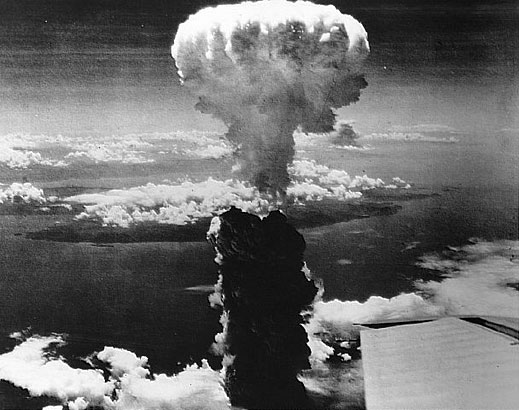
 It was Hiroshima which came first on the target and marked a history of deadly massacre when On August 6, 1945, the United States used a massive, atomic weapon against Hiroshima, Japan and this atomic bomb was equivalent of 20,000 tons of TNT.
It was Hiroshima which came first on the target and marked a history of deadly massacre when On August 6, 1945, the United States used a massive, atomic weapon against Hiroshima, Japan and this atomic bomb was equivalent of 20,000 tons of TNT.
 Just after a lapse of 3 days on August 9, 1945, another B-29 left Tinian at 3:49am. “Fat man”, the nickname used for the atomic bomb, was dropped on Nagasaki at 11:02am and it exploded 1650 feet above the city.
Just after a lapse of 3 days on August 9, 1945, another B-29 left Tinian at 3:49am. “Fat man”, the nickname used for the atomic bomb, was dropped on Nagasaki at 11:02am and it exploded 1650 feet above the city.
 Here are some of the facts about the atomic bomb which was dropped on the two cities: Length 3 meters, Diameter 0.7 meters, Weight 4 tons, Element Uranium 235, Energy equivalent to 20 kilotons of TNT explosive power.
Here are some of the facts about the atomic bomb which was dropped on the two cities: Length 3 meters, Diameter 0.7 meters, Weight 4 tons, Element Uranium 235, Energy equivalent to 20 kilotons of TNT explosive power.
 The death swelled up to about 140,000+/- 10,000, in which around 20,000 were soldiers, by the end of December 1945. This thing will come to you as a shock that 90% of these are thought to have been killed within 2 weeks after the bombing.
The death swelled up to about 140,000+/- 10,000, in which around 20,000 were soldiers, by the end of December 1945. This thing will come to you as a shock that 90% of these are thought to have been killed within 2 weeks after the bombing.
 Let’s talk about the buildings which were there at the time of atomic attack. What do you think the atomic bomb had possibly done to the building and to which extent?. There were 76,000 buildings in the city at the time and only 8% remained intact after the bomb explosion. The rest 92% of them were destroyed by blast and fire. The bomb affected an area of around 13 square kilometers and turned that into ruins.
Let’s talk about the buildings which were there at the time of atomic attack. What do you think the atomic bomb had possibly done to the building and to which extent?. There were 76,000 buildings in the city at the time and only 8% remained intact after the bomb explosion. The rest 92% of them were destroyed by blast and fire. The bomb affected an area of around 13 square kilometers and turned that into ruins.
 The radiation emitted in the air within one minute of the blast composed of gamma rays and neutrons. According to studies, if the whole body of a person is exposed to radiation of 700 rad or more than there is very less chance of escaping death. Now, if we refer to Hiroshima and Nagasaki and apply this rule there then we will come to know that location that was exposed to the lethal dose of 700 rad was a point approximately 925 meters away from the hypocentre (in Hiroshima); and in the case of the semi lethal dose of 400 rad, ap¬proximately 1,025 meters.
The radiation emitted in the air within one minute of the blast composed of gamma rays and neutrons. According to studies, if the whole body of a person is exposed to radiation of 700 rad or more than there is very less chance of escaping death. Now, if we refer to Hiroshima and Nagasaki and apply this rule there then we will come to know that location that was exposed to the lethal dose of 700 rad was a point approximately 925 meters away from the hypocentre (in Hiroshima); and in the case of the semi lethal dose of 400 rad, ap¬proximately 1,025 meters.
 ”Enola Gay” was the name given to the B-29 by the pilot and the nick name of the atomic bomb which was to be dropped later on was “Little Boy”. This so called “Little Boy” was a result of a 2 billion dollar research project.
”Enola Gay” was the name given to the B-29 by the pilot and the nick name of the atomic bomb which was to be dropped later on was “Little Boy”. This so called “Little Boy” was a result of a 2 billion dollar research project.
 A survivor of this catastrophic event can tell the best explanation of the actual scene of Hiroshima after the bomb exploded so I would like to quote his words here without amending it.
A survivor of this catastrophic event can tell the best explanation of the actual scene of Hiroshima after the bomb exploded so I would like to quote his words here without amending it.
“The appearance of people was . . . well, they all had skin blackened by burns. . . . They had no hair because their hair was burned, and at a glance you couldn’t tell whether you were looking at them from in front or in back. . . . They held their arms bent [forward] like this . . . and their skin – not only on their hands, but on their faces and bodies too – hung down. . . . If there had been only one or two such people . . . perhaps I would not have had such a strong impression. But wherever I walked I met these people. . . . Many of them died along the road – I can still picture them in my mind — like walking ghosts.”
 Did you know about nijū hibakusha?. This is the name given to those people who survived both the atomic bombs. Tsutomu Yamaguchi was the first officially recognized nijū hibakusha and he died on January 4, 2010, after a battle with stomach cancer at the age of 93.
Did you know about nijū hibakusha?. This is the name given to those people who survived both the atomic bombs. Tsutomu Yamaguchi was the first officially recognized nijū hibakusha and he died on January 4, 2010, after a battle with stomach cancer at the age of 93.
 I would like you to listen to a 4-year old survivor of the atomic bombs as he expresses his emotions in a very despondent manner. Despite of the fact that he survived, he was not happy at all because he did not have his mother by his side.
I would like you to listen to a 4-year old survivor of the atomic bombs as he expresses his emotions in a very despondent manner. Despite of the fact that he survived, he was not happy at all because he did not have his mother by his side.
“I saw the atom bomb. I was four then. I remember the cicadas chirping. The atom bomb was the last thing that happened in the war and no more bad things have happened since then, but I don’t have my Mummy any more. So even if it isn’t bad any more, I’m not happy.”
— Kayano Nagai, survivor

“The appearance of people was . . . well, they all had skin blackened by burns. . . . They had no hair because their hair was burned, and at a glance you couldn’t tell whether you were looking at them from in front or in back. . . . They held their arms bent [forward] like this . . . and their skin – not only on their hands, but on their faces and bodies too – hung down. . . . If there had been only one or two such people . . . perhaps I would not have had such a strong impression. But wherever I walked I met these people. . . . Many of them died along the road – I can still picture them in my mind — like walking ghosts.”
“I saw the atom bomb. I was four then. I remember the cicadas chirping. The atom bomb was the last thing that happened in the war and no more bad things have happened since then, but I don’t have my Mummy any more. So even if it isn’t bad any more, I’m not happy.”
— Kayano Nagai, survivor
Top 10 Best Cricketers of All Time in The World
1. Donald Bradman
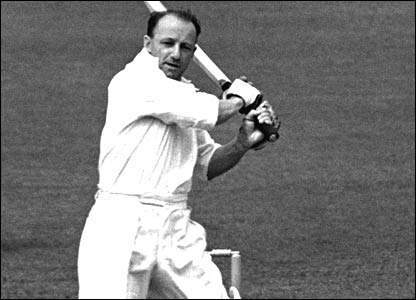
A great Batsman, he set high standards and scored 1930.Wisden has nominated him as the greatest Test Cricket player ever
Batting and fielding average
| Mat | Inns | NO | Runs | HS | Ave | 100 | 50 | 6s | Ct | St | |
| Tests | 52 | 80 | 10 | 6996 | 334 | 99.94 | 29 | 13 | 6 | 32 | 0 |
| First-class | 234 | 338 | 43 | 28067 | 452* | 95.14 | 117 | 69 | 131 | 1 |
| Mat | Inns | Balls | Runs | Wkts | BBI | BBM | Ave | Econ | SR | 4w | 5w | 10 | |
| Tests | 52 | 9 | 160 | 72 | 2 | 1/8 | 1/15 | 36.00 | 2.70 | 80.0 | 0 | 0 | 0 |
| First-class | 234 | 2114 | 1367 | 36 | 3/35 | 37.97 | 3.87 | 58.7 | 0 | 0 |
2. Sachin Tendulkar
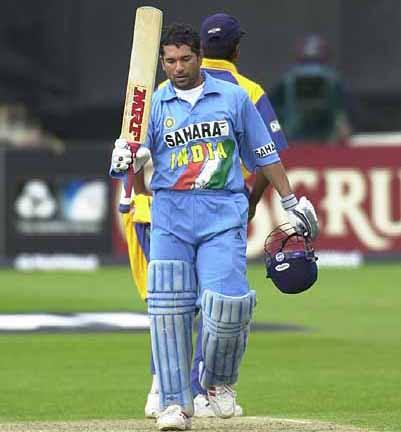
This Thirty six years old man has the highest cricket average in Test Cricket. It is expected he is going to break Donald Bradman’s records for sure. He is not only a great Test cricket player and a great ODI player
Batting and fielding averages
| Mat | Inns | NO | Runs | HS | Ave | BF | SR | 100 | 50 | 4s | 6s | Ct | St | |
| Tests | 177 | 290 | 32 | 14692 | 248* | 56.94 | 51 | 59 | 64 | 106 | 0 | |||
| ODIs | 442 | 431 | 41 | 17598 | 200* | 45.12 | 20401 | 86.26 | 46 | 93 | 1927 | 185 | 134 | 0 |
| T20Is | 1 | 1 | 0 | 10 | 10 | 10.00 | 12 | 83.33 | 0 | 0 | 2 | 0 | 1 | 0 |
| First-class | 280 | 442 | 48 | 23585 | 248* | 59.86 | 78 | 105 | 174 | 0 | ||||
| List A | 529 | 516 | 55 | 21150 | 200* | 45.87 | 57 | 111 | 169 | 0 | ||||
| Twenty20 | 44 | 44 | 5 | 1516 | 89* | 38.87 | 1171 | 129.46 | 0 | 11 | 201 | 21 | 19 | 0 |
| Mat | Inns | Balls | Runs | Wkts | BBI | BBM | Ave | Econ | SR | 4w | 5w | 10 | |
| Tests | 177 | 135 | 4096 | 2388 | 45 | 3/10 | 3/14 | 53.06 | 3.49 | 91.0 | 0 | 0 | 0 |
| ODIs | 442 | 267 | 8020 | 6817 | 154 | 5/32 | 5/32 | 44.26 | 5.10 | 52.0 | 4 | 2 | 0 |
| T20Is | 1 | 1 | 15 | 12 | 1 | 1/12 | 1/12 | 12.00 | 4.80 | 15.0 | 0 | 0 | 0 |
| First-class | 280 | 7461 | 4280 | 70 | 3/10 | 61.14 | 3.44 | 106.5 | 0 | 0 | |||
| List A | 529 | 10196 | 8445 | 201 | 5/32 | 5/32 | 42.01 | 4.96 | 50.7 | 4 | 2 | 0 | |
| Twenty20 | 44 | 8 | 93 | 123 | 2 | 1/12 | 1/12 | 61.50 | 7.93 | 46.5 | 0 | 0 | 0 |
3. Vivian Richards
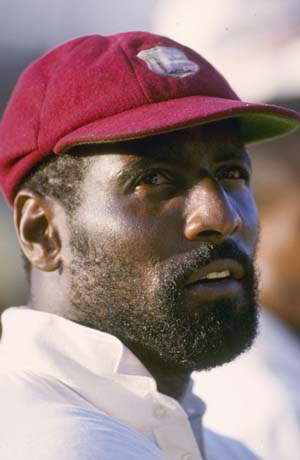
This man is a great batsman and an aggressive bowler. He has been ranked as the best One day International player of all times by Wisden. He is also a great fielder.
Batting and fielding averages
| Mat | Inns | NO | Runs | HS | Ave | BF | SR | 100 | 50 | 6s | Ct | St | |
| Tests | 121 | 182 | 12 | 8540 | 291 | 50.23 | 24 | 45 | 84 | 122 | 0 | ||
| ODIs | 187 | 167 | 24 | 6721 | 189* | 47.00 | 7451 | 90.20 | 11 | 45 | 100 | 0 | |
| First-class | 507 | 796 | 63 | 36212 | 322 | 49.40 | 114 | 162 | 464 | 1 | |||
| List A | 500 | 466 | 61 | 16995 | 189* | 41.96 | 26 | 109 | 238 | 0 |
| Mat | Inns | Balls | Runs | Wkts | BBI | BBM | Ave | Econ | SR | 4w | 5w | 10 | |
| Tests | 121 | 103 | 5170 | 1964 | 32 | 2/17 | 3/51 | 61.37 | 2.27 | 161.5 | 0 | 0 | 0 |
| ODIs | 187 | 131 | 5644 | 4228 | 118 | 6/41 | 6/41 | 35.83 | 4.49 | 47.8 | 1 | 2 | 0 |
| First-class | 507 | 23220 | 10070 | 223 | 5/88 | 45.15 | 2.60 | 104.1 | 1 | 0 | |||
| List A | 500 | 12214 | 8872 | 290 | 6/24 | 6/24 | 30.59 | 4.35 | 42.1 | 4 | 3 | 0 |
4. Brian Lara
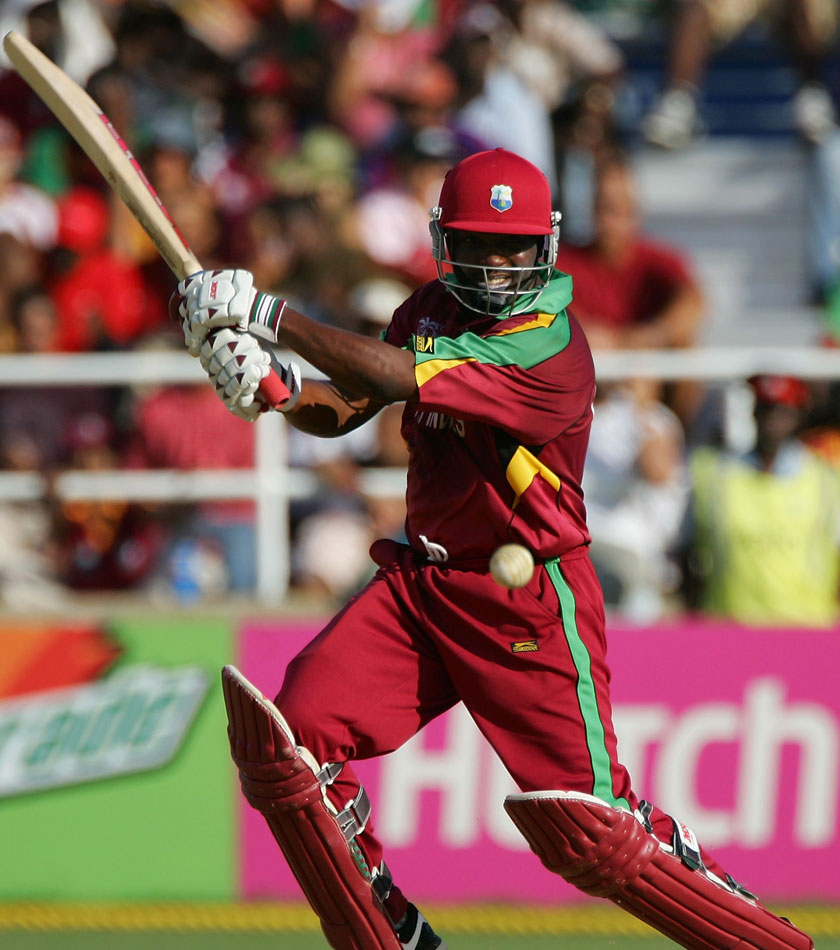
This man takes the crowd with him with his stylish batting; he could easily stick the bowler towards the boundary. He has set many records in batting including making highest score in an over that is 24 runs of an over in 2003
Batting and fielding averages
| Mat | Inns | NO | Runs | HS | Ave | BF | SR | 100 | 50 | 4s | 6s | Ct | St | |
| Tests | 131 | 232 | 6 | 11953 | 400* | 52.88 | 19753 | 60.51 | 34 | 48 | 1559 | 88 | 164 | 0 |
| ODIs | 299 | 289 | 32 | 10405 | 169 | 40.48 | 13086 | 79.51 | 19 | 63 | 120 | 0 | ||
| First-class | 261 | 440 | 13 | 22156 | 501* | 51.88 | 65 | 88 | 320 | 0 | ||||
| List A | 429 | 411 | 43 | 14602 | 169 | 39.67 | 27 | 86 | 177 | 0 | ||||
| Twenty20 | 3 | 3 | 0 | 99 | 65 | 33.00 | 86 | 115.11 | 0 | 1 | 11 | 1 | 0 | 0 |
| Mat | Inns | Balls | Runs | Wkts | BBI | BBM | Ave | Econ | SR | 4w | 5w | 10 | |
| Tests | 131 | 4 | 60 | 28 | 0 | - | - | - | 2.80 | - | 0 | 0 | 0 |
| ODIs | 299 | 5 | 49 | 61 | 4 | 2/5 | 2/5 | 15.25 | 7.46 | 12.2 | 0 | 0 | 0 |
| First-class | 261 | 514 | 416 | 4 | 1/1 | 104.00 | 4.85 | 128.5 | 0 | 0 | |||
| List A | 429 | 130 | 149 | 5 | 2/5 | 2/5 | 29.80 | 6.87 | 26.0 | 0 | 0 | 0 | |
| Twenty20 | 3 | - | - | - | - | - | - | - | - | - | - | - | - |
5. Muttiah Murlitharan
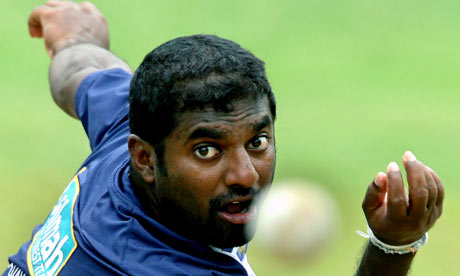
800 test wickets, this is an awesome record! A great bowler who has no parallel.
Batting and fielding averages
| Mat | Inns | NO | Runs | HS | Ave | BF | SR | 100 | 50 | 4s | 6s | Ct | St | |
| Tests | 133 | 164 | 56 | 1261 | 67 | 11.67 | 1794 | 70.28 | 0 | 1 | 146 | 29 | 72 | 0 |
| ODIs | 339 | 160 | 62 | 667 | 33* | 6.80 | 865 | 77.10 | 0 | 0 | 50 | 11 | 129 | 0 |
| T20Is | 12 | 2 | 0 | 1 | 1 | 0.50 | 5 | 20.00 | 0 | 0 | 0 | 0 | 1 | 0 |
| First-class | 232 | 276 | 83 | 2192 | 67 | 11.35 | 0 | 1 | 123 | 0 | ||||
| List A | 436 | 201 | 74 | 928 | 33* | 7.30 | 0 | 0 | 156 | 0 | ||||
| Twenty20 | 73 | 15 | 3 | 38 | 11 | 3.16 | 47 | 80.85 | 0 | 0 | 2 | 1 | 21 | 0 |
| Mat | Inns | Balls | Runs | Wkts | BBI | BBM | Ave | Econ | SR | 4w | 5w | 10 | |
| Tests | 133 | 230 | 44039 | 18180 | 800 | 9/51 | 16/220 | 22.72 | 2.47 | 55.0 | 45 | 67 | 22 |
| ODIs | 339 | 331 | 18265 | 11951 | 517 | 7/30 | 7/30 | 23.11 | 3.92 | 35.3 | 14 | 10 | 0 |
| T20Is | 12 | 12 | 282 | 297 | 13 | 3/29 | 3/29 | 22.84 | 6.31 | 21.6 | 0 | 0 | 0 |
| First-class | 232 | 66933 | 26997 | 1374 | 9/51 | 19.64 | 2.42 | 48.7 | 119 | 34 | |||
| List A | 436 | 22898+ | 14703 | 655 | 7/30 | 7/30 | 22.44 | 3.84* | 35.2* | 16 | 12 | 0 | |
| Twenty20 | 73 | 73 | 1686 | 1732 | 95 | 4/16 | 4/16 | 18.23 | 6.16 | 17.7 | 3 | 0 | 0 |
6. Garfield Sobers
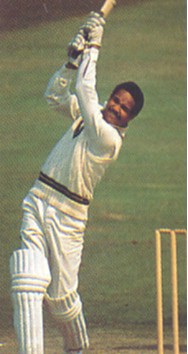
An amazing all rounder, who lead Westindies to excel in the field of cricket
Batting and fielding averages
| Mat | Inns | NO | Runs | HS | Ave | BF | SR | 100 | 50 | 4s | 6s | Ct | St | |
| Tests | 93 | 160 | 21 | 8032 | 365* | 57.78 | 26 | 30 | 109 | 0 | ||||
| ODIs | 1 | 1 | 0 | 0 | 0 | 0.00 | 6 | 0.00 | 0 | 0 | 0 | 0 | 1 | 0 |
| First-class | 383 | 609 | 93 | 28314 | 365* | 54.87 | 86 | 121 | 407 | 0 | ||||
| List A | 95 | 92 | 21 | 2721 | 116* | 38.32 | 1 | 18 | 41 | 0 |
| Mat | Inns | Balls | Runs | Wkts | BBI | BBM | Ave | Econ | SR | 4w | 5w | 10 | |
| Tests | 93 | 159 | 21599 | 7999 | 235 | 6/73 | 8/80 | 34.03 | 2.22 | 91.9 | 8 | 6 | 0 |
| ODIs | 1 | 1 | 63 | 31 | 1 | 1/31 | 1/31 | 31.00 | 2.95 | 63.0 | 0 | 0 | 0 |
| First-class | 383 | 70789 | 28941 | 1043 | 9/49 | 27.74 | 2.45 | 67.8 | 36 | 1 | |||
| List A | 95 | 4387 | 2393 | 109 | 5/43 | 5/43 | 21.95 | 3.27 | 40.2 | 4 | 1 | 0 |
7. Steve Waugh
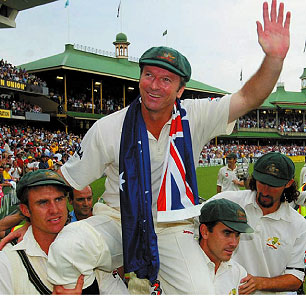
He was Australia’s captain from 1999-2004, an awesome cricketer!
Batting and fielding averages
| Mat | Inns | NO | Runs | HS | Ave | BF | SR | 100 | 50 | 4s | 6s | Ct | St | |
| Tests | 168 | 260 | 46 | 10927 | 200 | 51.06 | 22461 | 48.64 | 32 | 50 | 1175 | 20 | 112 | 0 |
| ODIs | 325 | 288 | 58 | 7569 | 120* | 32.90 | 9971 | 75.91 | 3 | 45 | 530 | 68 | 111 | 0 |
| First-class | 356 | 551 | 88 | 24052 | 216* | 51.94 | 79 | 97 | 273 | 0 | ||||
| List A | 436 | 393 | 81 | 11764 | 140* | 37.70 | 13 | 67 | 150 | 0 |
| Mat | Inns | Balls | Runs | Wkts | BBI | BBM | Ave | Econ | SR | 4w | 5w | 10 | |
| Tests | 168 | 150 | 7805 | 3445 | 92 | 5/28 | 8/169 | 37.44 | 2.64 | 84.8 | 4 | 3 | 0 |
| ODIs | 325 | 207 | 8883 | 6761 | 195 | 4/33 | 4/33 | 34.67 | 4.56 | 45.5 | 3 | 0 | 0 |
| First-class | 356 | 17428 | 8155 | 249 | 6/51 | 32.75 | 2.80 | 69.9 | 5 | 0 | |||
| List A | 436 | 11245 | 8607 | 257 | 4/32 | 4/32 | 33.49 | 4.59 | 43.7 | 4 | 0 | 0 |
8. Sir Ian Botham
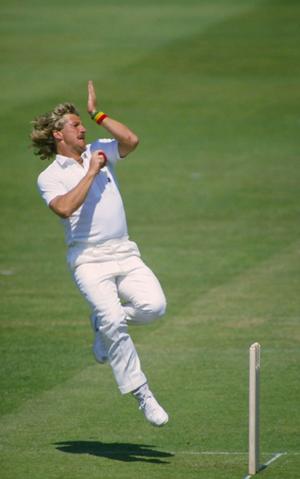
This man is still the highest wicket holder among all the English bowlers. He could both bat and bowl great.
Batting and fielding averages
| Mat | Inns | NO | Runs | HS | Ave | BF | SR | 100 | 50 | 4s | 6s | Ct | St | |
| Tests | 102 | 161 | 6 | 5200 | 208 | 33.54 | 8565 | 60.71 | 14 | 22 | 621 | 67 | 120 | 0 |
| ODIs | 116 | 106 | 15 | 2113 | 79 | 23.21 | 2671 | 79.10 | 0 | 9 | 197 | 44 | 36 | 0 |
| First-class | 402 | 617 | 46 | 19399 | 228 | 33.97 | 38 | 97 | 354 | 0 | ||||
| List A | 470 | 419 | 64 | 10474 | 175* | 29.50 | 7 | 46 | 196 | 0 |
| Mat | Inns | Balls | Runs | Wkts | BBI | BBM | Ave | Econ | SR | 4w | 5w | 10 | |
| Tests | 102 | 168 | 21815 | 10878 | 383 | 8/34 | 13/106 | 28.40 | 2.99 | 56.9 | 17 | 27 | 4 |
| ODIs | 116 | 115 | 6271 | 4139 | 145 | 4/31 | 4/31 | 28.54 | 3.96 | 43.2 | 3 | 0 | 0 |
| First-class | 402 | 63547 | 31902 | 1172 | 8/34 | 27.22 | 3.01 | 54.2 | 59 | 8 | |||
| List A | 470 | 22899 | 15264 | 612 | 5/27 | 5/27 | 24.94 | 3.99 | 37.4 | 15 | 3 | 0 |
9. Shane Warne
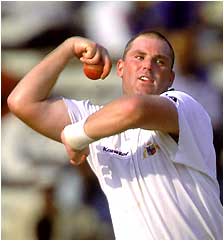
This is the man who can spin the most awesome! He has these tactics to come in the top 5 bowlers of the world. He was listed in the top 5 players of the world in 2000 and in 2006 his bowling is a total monster!
Batting and fielding averages
| Mat | Inns | NO | Runs | HS | Ave | BF | SR | 100 | 50 | 4s | 6s | Ct | St | |
| Tests | 145 | 199 | 17 | 3154 | 99 | 17.32 | 5470 | 57.65 | 0 | 12 | 353 | 37 | 125 | 0 |
| ODIs | 194 | 107 | 29 | 1018 | 55 | 13.05 | 1413 | 72.04 | 0 | 1 | 60 | 13 | 80 | 0 |
| First-class | 301 | 404 | 48 | 6919 | 107* | 19.43 | 2 | 26 | 264 | 0 | ||||
| List A | 311 | 200 | 41 | 1879 | 55 | 11.81 | 0 | 1 | 126 | 0 | ||||
| Twenty20 | 45 | 27 | 7 | 200 | 34* | 10.00 | 208 | 96.15 | 0 | 0 | 14 | 7 | 14 | 0 |
| Mat | Inns | Balls | Runs | Wkts | BBI | BBM | Ave | Econ | SR | 4w | 5w | 10 | |
| Tests | 145 | 273 | 40705 | 17995 | 708 | 8/71 | 12/128 | 25.41 | 2.65 | 57.4 | 48 | 37 | 10 |
| ODIs | 194 | 191 | 10642 | 7541 | 293 | 5/33 | 5/33 | 25.73 | 4.25 | 36.3 | 12 | 1 | 0 |
| First-class | 301 | 74830 | 34449 | 1319 | 8/71 | 26.11 | 2.76 | 56.7 | 69 | 12 | |||
| List A | 311 | 16419 | 11642 | 473 | 6/42 | 6/42 | 24.61 | 4.25 | 34.7 | 20 | 3 | 0 | |
| Twenty20 | 45 | 45 | 984 | 1225 | 46 | 4/21 | 4/21 | 26.63 | 7.46 | 21.3 | 1 | 0 | 0 |
10. Jacques Kallis
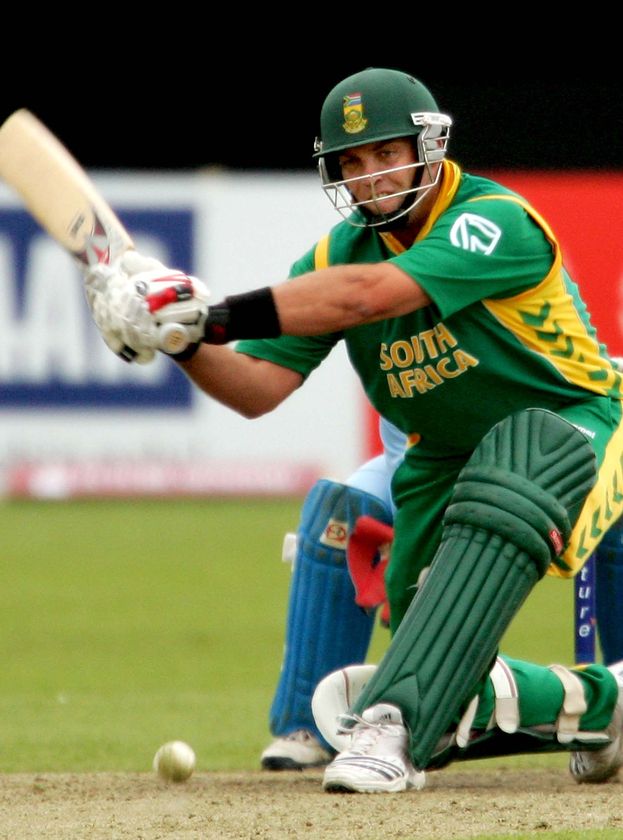
He has been called the Greatest Cricketer to play the game. N there is no doubt about that. He is a figure whose presence inspires some and terrifies some. He is a forceful batsman and a classical cricketer
Batting and fielding averages
| Mat | Inns | NO | Runs | HS | Ave | BF | SR | 100 | 50 | 4s | 6s | Ct | St | |
| Tests | 145 | 246 | 38 | 11947 | 201* | 57.43 | 26418 | 45.22 | 40 | 54 | 1315 | 86 | 166 | 0 |
| ODIs | 307 | 293 | 53 | 11002 | 139 | 45.84 | 15117 | 72.77 | 17 | 80 | 862 | 129 | 116 | 0 |
| T20Is | 16 | 16 | 1 | 512 | 73 | 34.13 | 427 | 119.90 | 0 | 4 | 40 | 17 | 6 | 0 |
| First-class | 235 | 386 | 55 | 18299 | 201* | 55.28 | 57 | 92 | 228 | 0 | ||||
| List A | 401 | 383 | 64 | 14183 | 155* | 44.46 | 23 | 102 | 145 | 0 | ||||
| Twenty20 | 67 | 67 | 10 | 1978 | 89* | 34.70 | 1729 | 114.40 | 0 | 17 | 200 | 45 | 24 | 0 |
| Mat | Inns | Balls | Runs | Wkts | BBI | BBM | Ave | Econ | SR | 4w | 5w | 10 | |
| Tests | 145 | 240 | 18337 | 8643 | 270 | 6/54 | 9/92 | 32.01 | 2.82 | 67.9 | 7 | 5 | 0 |
| ODIs | 307 | 269 | 10270 | 8264 | 259 | 5/30 | 5/30 | 31.90 | 4.82 | 39.6 | 2 | 2 | 0 |
| T20Is | 16 | 12 | 186 | 229 | 5 | 2/20 | 2/20 | 45.80 | 7.38 | 37.2 | 0 | 0 | 0 |
| First-class | 235 | 27072 | 12607 | 405 | 6/54 | 31.12 | 2.79 | 66.8 | 8 | 0 | |||
| List A | 401 | 13079 | 10270 | 335 | 5/30 | 5/30 | 30.65 | 4.71 | 39.0 | 3 | 3 | 0 | |
| Twenty20 | 67 | 59 | 1112 | 1482 | 36 | 3/16 | 3/16 | 41.16 | 7.99 | 30.8 | 0 | 0 | 0 |
Top Ten Destructive Batsmen of the World
10. Tillakaratne Dilshan:
![Top 10 Most Destructive Batsmen [CRICKET] Tillakaratne Dilshan Top 10 Most Destructive Batsmen [CRICKET]](http://www.tiptoptens.com/wp-content/uploads/2011/08/Tillakaratne-Dilshan.jpg)
The current captain of the Sri Lankan team, Dilshan’s natural game is very synonymous to destruction. Dilshan has the ability to score quickly and can hit big shots that make the bowler frustrated. From the last two to three years, Dilshan has become one of the biggest threats to the opposition and is considered as the most important and vital asset of the Sri Lankan team. As an opener he provides the opportunity to the middle order to score freely without feeling any pressure.
9. Brendon McCullum:
![Top 10 Most Destructive Batsmen [CRICKET] Brendon McCullum Top 10 Most Destructive Batsmen [CRICKET]](http://www.tiptoptens.com/wp-content/uploads/2011/08/Brendon_McCullum.jpg)
Wicketkeeper batsman, Brendon McCullum is one of the most important assets of the New Zealand batting site. Brendon is also one of those guys who are considered as the biggest threat to the opposition because of his powerful and big hitting. He is stylish, he is dangerous and he is destructive.
8. Kevin Pieterson:
![Top 10 Most Destructive Batsmen [CRICKET] Kevin Pietersen Top 10 Most Destructive Batsmen [CRICKET]](http://www.tiptoptens.com/wp-content/uploads/2011/08/Kevin-Pietersen.jpg)
Kevin Pieterson made his way in the England team and quickly established himself as the first choice batsman in the English Batting lineup. Kevin Pieterson has a unorthodox batting style and he is capable of hitting big shots and can score quickly. He is considered as one of the most dangerous batsmen of the present era and he alone has guided his team home towards victory uncountable times.
7. Virender Sehwag:
![Top 10 Most Destructive Batsmen [CRICKET] virender sehwag Top 10 Most Destructive Batsmen [CRICKET]](http://www.tiptoptens.com/wp-content/uploads/2011/08/virender-sehwag.jpg)
Well Indian team has the best batting lineup today which is compromised of big names and the one of the big name is none other than Virender Sehwag. Sehwag has strong wrists which is the reason why he is one of the dangerous batsmen in the cricketing world. He is one of the few batsmen who has the strike rate of above hundred. Virender Sehwag is considered as the backbone of the Indian batting lineup because when he gets going, no one can stop him.
6. Shane Watson:
![Top 10 Most Destructive Batsmen [CRICKET] Shane Watso Top 10 Most Destructive Batsmen [CRICKET]](http://www.tiptoptens.com/wp-content/uploads/2011/08/Shane_Watso.jpg)
Early in his career, Shane Watson has to battle through many injuries but when he made his return, he explodes like no one expected. An opener, Shane Watson provides a kind of a start which eases the pressure on the middle order and when he switches to his big hitting mood, the bowlers start praying and beg for mercy. Shane Watson has all the skills and talent that can destroy the opposition bowling lineup and he has proved this on numerous occasions.
5. Abdur Razzaq:
![Top 10 Most Destructive Batsmen [CRICKET] abdur razzaq Top 10 Most Destructive Batsmen [CRICKET]](http://www.tiptoptens.com/wp-content/uploads/2011/08/abdur-razzaq.jpg)
Along with his Boom Boom! Team mate Shahid Afridi, Abdur Razzaq is another very dangerous batsman in Pakistani Cricket Team. This man can perform in any circumstances no matter what the situation demands. For his clean and hard hitting, Abdur Razzaq has been nicknamed Bang Bang Razzaq. He normally comes down to the batting order when there are few overs left and there is a massive target in front of him and very efficiently acts as a finisher in the Pakistani site.
4. M S Dhoni:
![Top 10 Most Destructive Batsmen [CRICKET] ms dhoni Top 10 Most Destructive Batsmen [CRICKET]](http://www.tiptoptens.com/wp-content/uploads/2011/08/ms-dhoni.jpg)
From the past 6 years M S Dhoni has become a very vital and important part of the Indian Cricket Team. The highlight of his career clearly shows that how much he has destroyed the oppositions with his blistering knocks and just for the record; he is the current captain of the Indian site in all formats. Dhoni is not only a intelligent captain but also a very destructive and dangerous batsman and has proved this thing on numerous occasions.
3. Michael Hussey:
![Top 10 Most Destructive Batsmen [CRICKET] michael hussey Top 10 Most Destructive Batsmen [CRICKET]](http://www.tiptoptens.com/wp-content/uploads/2011/08/michael-hussey.jpg)
Nicknamed Mr. Cricket. It is believed that Michael Hussey has the best cricketing brain the world and he is considered as the greatest asset of the Australian team. Since his debut, Hussey has established himself as the frontline batsman in the Australian site and he has guided his team to convincing victories on numerous occasions. He can smash quick fire knocks and can also play defensively whatever is the demand of the situation and this is for sure that he is one of the biggest threat for any opposition.
2. Chris Gayle:
![Top 10 Most Destructive Batsmen [CRICKET] chris gayle Top 10 Most Destructive Batsmen [CRICKET]](http://www.tiptoptens.com/wp-content/uploads/2011/08/chris-gayle.jpg)
Over 6 feet tall, cool and calm in nature with tremendous wrist power. Chris Gayle is the man who can single handedly snatch the game from the opposition with his blazing knocks and high power hitting. West Indian team depends entirely on his shoulder and he very proudly accepts this responsibility and is always ready to dismantle the opposition. His entire career is role model for the coming generations and if I say that he is one of the most dangerous batsman alive today, then I don’t think that anyone would disagree.
1. Shahid Afridi:
![Top 10 Most Destructive Batsmen [CRICKET] shahid afridi Top 10 Most Destructive Batsmen [CRICKET]](http://www.tiptoptens.com/wp-content/uploads/2011/08/shahid-afridi.jpg)
The man who rose to prominence in just his second match where he blasted the fastest century in the history of ODI cricket. Shahid Afridi is considered as one of the most feared cricketer in the world and this statement can be justified when we look at his strike rate because he has the highest strike rate by any batsman in the history of cricket. His hard hitting and destructive batting is the reason why every opposition is afraid of him. When he is in mood, everyone runs for their lives. Adding another milestone in his achievements, Shahid Afridi has smashed the longest and the biggest six in the history against Australia.
Tuesday 6 September 2011
Nishan-e-Haider
| The highest Military Award of Pakistan has been awarded to Shaheed Soldiers who have shown bravery and courage in Times of War & Border battles(1948,1956,1965,1971,1999) Shaheed Foundation Pakistan presents regard to shaheed-Pakistan. | 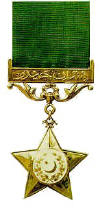 |
 | |
| Captain Mohammad Sarwar Shaheed Born: 1910, Singhori Village, District of Rawalpindi Commissioned: 1944, Punjab Regiment During the Kashmir Operations soon after the birth of Pakistan, as Company Commander of the 2nd Battalion of the Punjab Regiment, Captain Sarwar launched an attack causing heavy casualties against a strongly fortified enemy position in the Uri Sector under heavy machine gun, grenade and mortar fire. But on the 27th July 1948, as he moved forward with six of his men to cut their way through a barbed wire barrier, he died when his chest was riddled by a burst of heavy machine gun fire. |  |
 | |
| Major Tufail Mohammad Shaheed Born: 1914, Hoshiarpur Commissioned: 1943, 16th Punjab Regiment Early in August 1958, Major Tufail, a Company Commander in the East Pakistan Rifles, encircled an illegal Indian post, which violated the internationally recognized boundary between the two countries, in the Lakshmipur area. And, though mortally wounded in the hand-to-hand encounter that followed, Major Tufail continued to lead his troops till the Indians were driven out, leaving four dead and three prisoners. He died the same day on the 7th August 1958. |  |
 | |
| Major Raja Aziz Bhatti Shaheed Born: 1928, Hong Kong Commissioned: 1950, Punjab Regiment On 6th September 1965, as Company Commander in the Burki Area of the Lahore Sector, Major Bhatti chose to move with his forward platoon under incessant artillery and tank attacks for five days and nights in Defence of the strategically vital BRB Canal. Throughout, undaunghted by constant fire from enemy small arms, tanks and artillery, he organized the Defence of the canal, directing his men to answer the fire until he was hit by an enemy tank shell which killed him on 10th September 1965. |  |
 | |
| Major Mohammad Akram Shaheed Born: 1938, Dingha Village, District of Gujrat Commissioned: 1963, Frontier Force Regiment Major Muhammad Akram and a company of the 4th FF Regiment which he commanded in the forward area of the Hilli district, in East Pakistan in 1971, came under continuous and heavy air, artillery and Armour attacks. But for an entire fortnight, despite enemy superiority in both numbers and fire power, he and his men, in near super human ability, repulsed every attack, inflicting heavy casualties on the enemy. Major Akram died during this epic battle in 1971. |  |
 | |
| Pilot Officer Rashid Minhas Shaheed Born: 17th February 1951 Commissioned: 1971, Pilot, P.A.F. Pilot Officer Minhas was taxiing for take-off on a routine training flight when an Instructor Pilot forced his way into the rear cockpit, seized control of the aircraft and took off. When Minhas realized that the absconding pilot was heading towards India, he tried to regain control of the plane was unable to do so. Knowing that it meant certain death, he damaged the controls and forced the aircraft to crash thirty two miles short of the border on 20th August 1971. |  |
 | |
| Major Shabir Sharif Shaheed Born: 1943, Kunjah Village, District of Gujrat Commissioned: 1964, Frontier Force Regiment Major Shabir Sharif as commander of 6 FF Regiment, was ordered in December 1971 to capture high ground near Sulemanki headwork defended by more than a company of the Assam Regiment supported by a squadron of tanks. In a well nigh super human action, for the next three days and nights after crossing a minefield and massive obstacles and killing forty three soldiers and destroying four tanks, Major Sharif and his men held two enemy battalions at bay. But after he took over an anti-tank gun from his gunner in an attack he was killed by a direct hit on the afternoon of 6th December. |  |
 | |
| Jawan Sowar Mohammad Hussain Shaheed Born: 1949, Dhok Pir Bakhsh (now Dhok Muhammad Hussain Janjua) Enlisted: 1966, Driver Although only a driver in the 20th Lancers, when war broke out in 1971 Sowar Muhammad Hussain took an active part in every battle in which his unit was engaged unmindful of any danger, no matter how grave. When he spotted the enemy digging in along a minefield near the village of Harar Khurd in December 1971 on his own initiative he directed accurate fire at the enemy resulting in the destruction of sixteen of their tanks. But while directing fire from recoilless rifles, he was hit in the chest by a burst of machine gun fire and died on 10th December 1971. |  |
 | |
| Lance Naik Mohammad Mahfuz Shaheed Born: 1944, Pind Malikan (now Mahfuzabad) District of Rawalpindi Enlisted: 1962, Sipahi Serving in the 'A' Company of the 15th Punjab Regiment, when the war started in 1971, Lance Naik Muhammad Mahfuz was deployed on the Wagah-Attari Sector in East Pakistan where his company was pinned down by unceasing frontal and cross fire from automatic weapons. Although his machine gun was destroyed by an enemy shell, Mahfuz advanced towards an enemy bunker whose automatic fire had inflicted heavy casualties. Even though wounded in both legs by shell splinters, when he reached the bunker he stood up and pounced on the enemy, but was hit. Although unarmed and amidst the enemy, he caught hold of one of the enemy and was strangling him when another bayoneted him to death during the night of 17th December 1971. |  |
 | |
| Captain Karnal Sher Khan Shaheed Enlisted: 1990, Second Lt. Captain Karnal Sher and Hav. Lalak Jan joined those eight legendary heroes who received the highest military award of Nishan-i-Haider for laying down their lives in defence of the beloved motherland. Captain Karnal Sher Khan emerged as the symbol of mettle and courage during the Kargil conflict on the Line of Control (LoC). He set personal examples of bravery and inflicted heavy losses on the enemy. He defended the five strategic posts, which he established with his jawans at the height of some 17,000 feet at Gultary, and repulsed many Indian attacks. After many abortive attempts, the enemy on July 5 ringed the post of Capt. Sher Khan with the help of two battalion and unleashed heavy mortar firing and managed to capture some part of the post. Despite facing all odds, he lead a counter-attack and re- captured the lost parts. But during the course he was hit by the machine-gun fire and embraced Shahadat at the same post. He is the first officer from the NWFP province to be awarded with Nishan-i-Haider. | 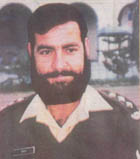 |
 | |
| Havaldaar Lalak Jan Shaheed Hav. Lalak Jan of the Northern Light Infantry (NLI) was one of those many who as a junior leader fought from the forefront to thwart heavy Indian attacks. He volunteered himself to be deployed on the front positions located at the jagged peak in May 1999. Hav. Lalak driven back many aggressive ventures by the enemy and imposed colossal losses on them. On July 7, Hav. Lalak sustained serious injuries as enemies pounded the area with heavy mortar shelling. But despite being injured, he retained his position and frustrated the Indian assault. He, however, succumbed to his injuries at the same post he was defending. Hav. Lalak was awarded with the Nishan-i-Haider for his dauntless courage and devotion. | 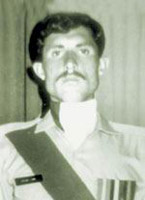 |
Subscribe to:
Posts (Atom)



